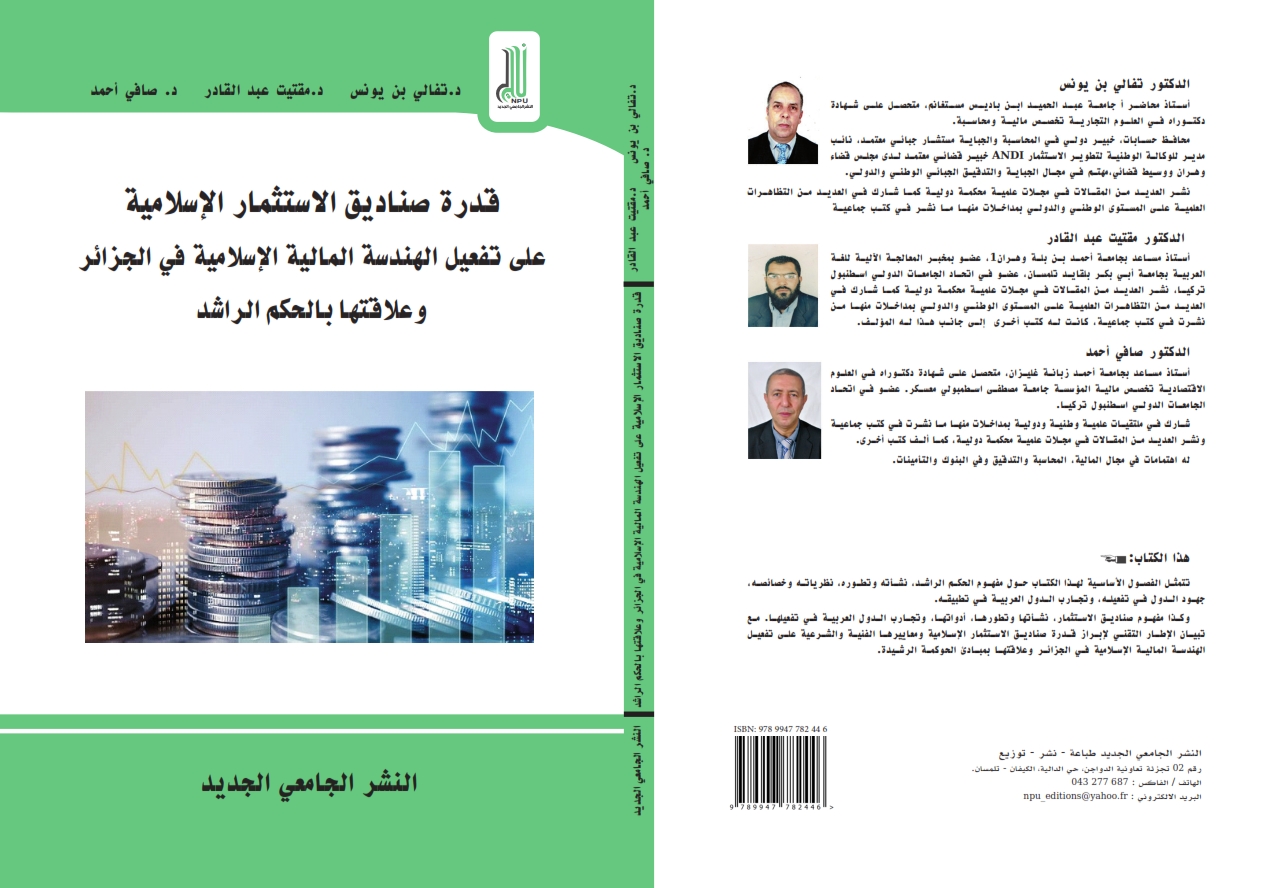Plateforme d'Enseignement à Distance de l'Université Oran 1 Ahmed Ben Bella
Site blog
Fiche de TD 1.
Lois de Kirchhoff
Surgical management of unresectable perihilar cholangiocarcinoma is no longer relevant, often these patients benefit from less invasive endoscopic or radiological management, but in the event of failure of these techniques, and in selected patients, cholangiojejunostomy in segment 3 can be an effective option.We describe the case of a 48‐year‐old patient presenting an unresectable perihilar cholangiocarcinoma, palliative endoscopic management failed twice, and an open segment 3 intrahepatic cholangio‐jejunostomy was performed, the patient was discharged on the 7th day, has a complete resolution of jaundice at 1 month and is alive at 6 months without any readmission.
Les thérapeutiques conservatrices visent à préserver la vitalité pulpaire, étant donné que la pulpe, une fois stimulée, induit une régénération et une formation d’une apposition dentinaire et radiculaire. Depuis de nombreuses années, l’Hydroxyde de Calcium a été le matériau de référence pour ces thérapeutiques. La nouvelle approche de la dentisterie restauratrice combinée à la mise sur le marché de nouveaux matériaux performants à base de silicate tricalcique tels que Biodentine est à la base de cette étude. L’objectif est de comparer les effets dentinogénétiques de Biodentine et l’Hydroxyde de Calcium sur des dents matures par des thérapeutiques de coiffages pulpaires directs et indirects d’une part, et d’autre part d’observer ces mêmes effets sur des dents permanentes immatures par des thérapeutiques d’apexogénèse.
Il s’agit d’une étude clinique monocentrique, randomisée avec bénéfice individuel direct, contrôlée, ouverte en simple insu.
121 dents permanentes matures chez 98 patients ont été randomisées et traitées par coiffages pulpaires directs et indirects avec les deux biomatériaux ainsi que 27 dents immatures chez 18 enfants. L’étude a duré trois années. Les suivis clinique et radiologique ont été réalisés sur une période d’une année, à des intervalles de 15j, 1, 2, 3, 6 et 12 mois. L’analyse a été effectuée à l’aide du logiciel SPSS (IBM SPSS Statistics 20).
Comparé au MTA et à l’Hydroxyde de Calcium, Biodentine semble favorable pour les thérapeutiques de conservation de la vitalité pulpaire sur dents matures et sur dents immatures.
|
Résumé : Les thérapeutiques conservatrices visent à préserver la vitalité pulpaire, étant donné que la pulpe, une fois stimulée, induit une régénération et une formation d’une apposition dentinaire et radiculaire. Depuis de nombreuses années, l’Hydroxyde de Calcium a été le matériau de référence pour ces thérapeutiques. La nouvelle approche de la dentisterie restauratrice combinée à la mise sur le marché de nouveaux matériaux performants à base de silicate tricalcique tels que Biodentine est à la base de cette étude. L’objectif est de comparer les effets dentinogénétiques de Biodentine et l’Hydroxyde de Calcium sur des dents matures par des thérapeutiques de coiffages pulpaires directs et indirects d’une part, et d’autre part d’observer ces mêmes effets sur des dents permanentes immatures par des thérapeutiques d’apexogénèse. Il s’agit d’une étude clinique monocentrique, randomisée avec bénéfice individuel direct, contrôlée, ouverte en simple insu. 121 dents permanentes matures chez 98 patients ont été randomisées et traitées par coiffages pulpaires directs et indirects avec les deux biomatériaux ainsi que 27 dents immatures chez 18 enfants. L’étude a duré trois années. Les suivis clinique et radiologique ont été réalisés sur une période d’une année, à des intervalles de 15j, 1, 2, 3, 6 et 12 mois. L’analyse a été effectuée à l’aide du logiciel SPSS (IBM SPSS Statistics 20). Comparé au MTA et à l’Hydroxyde de Calcium, Biodentine semble favorable pour les thérapeutiques de conservation de la vitalité pulpaire sur dents matures et sur dents immatures. |
المقال موسوم بـ:التضامن الرّقمي": مُقاربة سيكودينامية لفهم التأثير عبر مواقع التواصل قراءة في الاستمالات العاطفية لمنشورات
نُشر في مجلة جيل للعلوم الإنسانية (تصدر عن مركز جيل بلبنان) بتاريخ: 3 مارس 2021.
(المقال صدر في 18 ديسمبر 2020 بالمجلة الدولية "دراسات في العلوم الانسانية والاجتماعية" (جامعة سكاريا بتركيا بالتعاون مع مركز البحث بالأردن

تعتبر صناديق الاستثمار من أحدث الوسائل في عالم الأسواق المالية التي تلعب دورا بارزا في تجميع المدخرات من المستثمرين لتفعيلها واستثمارها في شراء وبيع الأوراق المالية، وقد عرفت الصناعة المالية انتشارا واسعا في الأسواق المالية لتمكنها من تحقيق الأرباح دون مخاطرة، لما تعتمده في تسيرها الإداري من الإطارات ذات الخبرة الواسعة والاحترافية المتميزة من جهة، وحسن التوظيف لفائض السيولة للمصارف من جهة أخرى، فلهذه الأسباب وغيرها أصبحت الصناديق الاستثمارية قبلة المستثمرين رغم السلبيات التي عرفتها لاسيما في نوعية التوريق المالي المستثمرة في الصناديق في ظل غياب قواعد الحوكمة، ناهيك عن مشكل الحماية [حماية حقوق حملة الوثائق]، الشيء الذي دفعها إلى تبني نظام حوكمي يقوم على المراقبة الآلية للصناديق الاستثمارية حفظا للأموال المستثمرة ودفعا كليا أو جزئيا للمخاطر المحتملة.
ولما كانت التجربة السعودية تجربة رائدة في هذا المجال حيث بلغ عدد صناديق الاستثمار المدرجة في السوق المالي السعودي في عام 2007م [252 صندوق/ وحجم أصولها 105.10 مليار ريال سعودي] ،كان لزاما استنساخ هذه التجربة ومحاولة الوقوف على إيجابيتها وعدم الوقوع في سلبياتها خاصة بعد الانهيار المالي العالمي والذي أثر سلبا على الصناديق الاستثمارية في السعودية، حيث عرفت تراجع في عدد صناديقها سنة 2009م [من 252 صندوق إلى 244 صندوق]، [ومن حجم أصولها المالية من105.10 مليار ريال إلى 89.55 مليار ريال سعودي] فكان من الأسباب المباشرة في عزوف عدد كبير من المستثمرين بسحب جملة الوثائق أموالهم من صناديقهم الاستثمارية.[1]
Ce Manuel didactique est destiné́ à tous les chirurgiens pédiatres ; essentiellement aux chirurgiens « juniors », il constitue un support pédagogique utile pour leur formation universitaire. Les pathologies thoraciques les plus fréquentes de l’enfant sont revues en insistant sur les aspects diagnostiques et thérapeutiques.
Ce mémento a été élaboré en regroupant des cours d’enseignements de plusieurs années universitaires synthétisant ainsi ce que doit connaître un chirurgien pédiatre concernant les pathologies thoraciques chez l’enfant.
